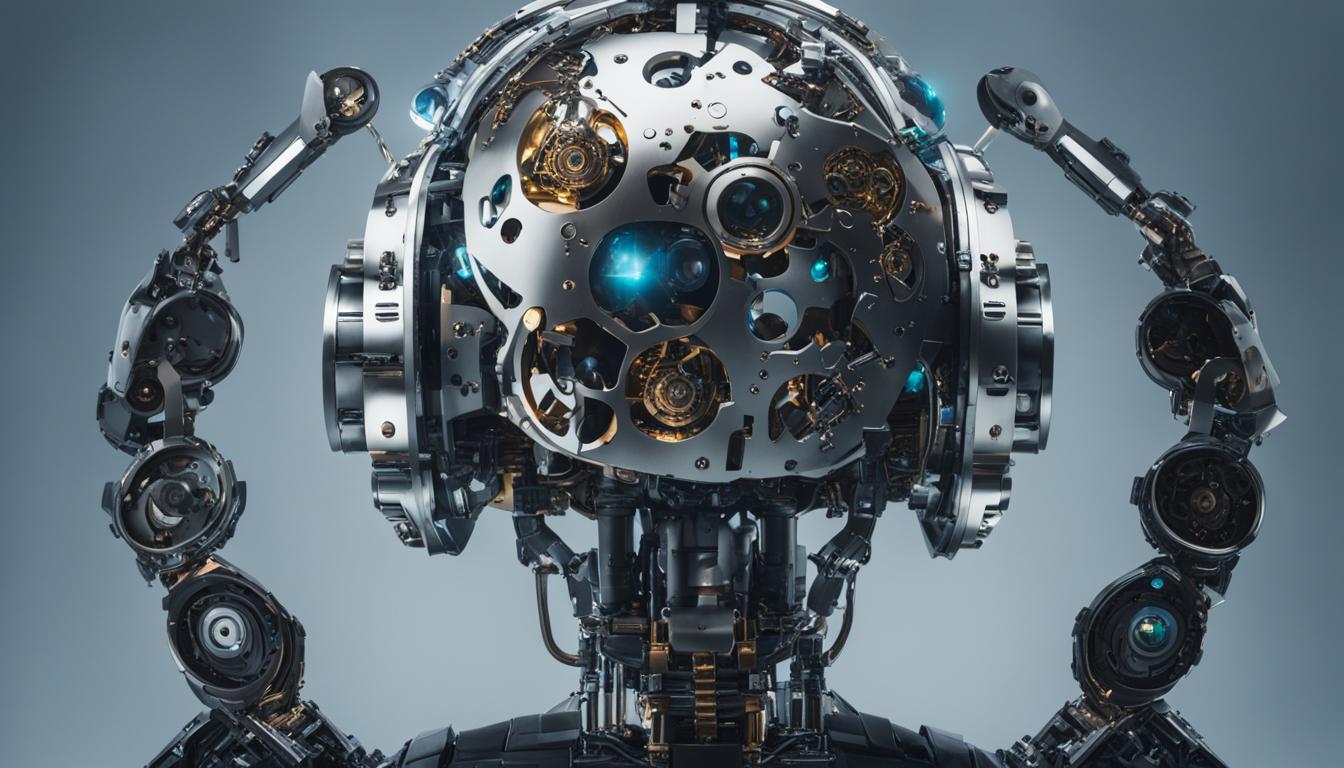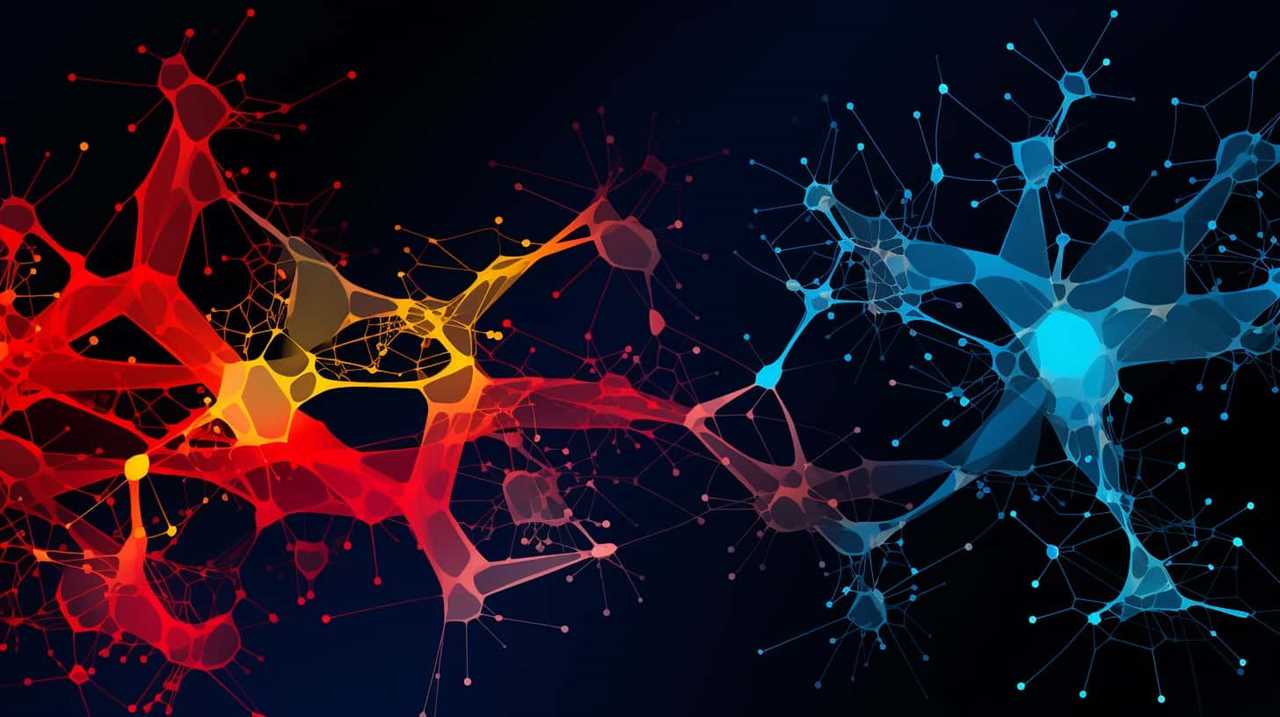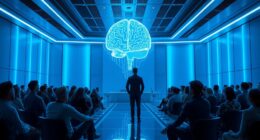In the current technology environment, artificial intelligence (AI) is a highly discussed topic, yet it is often misunderstood. This article aims to debunk common myths and misunderstandings surrounding AI. Our objective is to distinguish between reality and fiction, providing a clearer understanding of the capabilities and limitations of AI.
Key Takeaways:
- AI is not the same as human intelligence.
- AI is accessible and affordable.
- AI creates new job opportunities.
- AI algorithms can be biased and require ethical considerations.
- AI is an enabler, not a replacement for humans.
AI is Not the Same as Human Intelligence
Artificial Intelligence (AI) has generated a lot of interest and excitement in recent years, but there are some misconceptions that need to be addressed. One common misconception is that AI is equivalent to human intelligence, but this is not accurate.
While AI strives to simulate human intelligence using machines, it is important to understand that AI and human intelligence are fundamentally different. AI, especially machine learning, is designed to perform specific tasks based on algorithms and trained data. It excels at processing large volumes of information and making predictions.
However, human intelligence involves a wide-ranging set of capabilities that go beyond what AI can currently achieve. Human intelligence includes not only learning and understanding but also skills such as communication, creative problem-solving, and decision-making based on intuition and empathy.
It is crucial to differentiate between specialized AI and general AI. Specialized AI is built for specific tasks, such as image recognition or natural language processing. On the other hand, general AI, which aims to mimic human intelligence on a broader scale, is still a distant goal.
To illustrate the difference, consider a chatbot that uses AI to provide customer support. The chatbot can quickly analyze customers’ inquiries and offer relevant responses based on the information it has been trained on. However, it lacks true understanding and cannot engage in a meaningful conversation the way a human can. It lacks empathy and cannot grasp nuances or context.
AI is powerful in its own right, but it is not a replacement for human intelligence. It complements human abilities, enhancing our efficiency and productivity in specific domains.
Therefore, it is important not to conflate AI with human intelligence. While AI has made remarkable progress and offers valuable applications, it falls short of replicating the full scope of human intellect and capabilities.
AI vs Human Intelligence: A Comparison
To further highlight the distinctions between AI and human intelligence, let’s compare their key characteristics in a table:
| AI | Human Intelligence |
|---|---|
| Specialized in performing specific tasks | Capable of learning, understanding, and reasoning |
| Relies on algorithms and trained data | Relies on learning, experience, and intuition |
| Lacks true awareness and consciousness | Mindful and self-aware |
| Not equipped with emotions or empathy | Exhibits emotions, empathy, and social intelligence |
| Can process vast amounts of data quickly | Can process information while considering context and relevance |
| Capable of repetitive tasks without fatigue | Capable of adapting and learning from new situations |
Understanding the distinctions between AI and human intelligence is crucial for setting realistic expectations and harnessing the power of AI effectively.
AI is Affordable and Accessible
Contrary to the misconception that AI is expensive and difficult to implement, it has become more accessible and affordable than ever before. Businesses of all sizes can now leverage the power of AI without breaking the bank.
While training large AI models can be costly, there are cost-effective alternatives available. Cloud platforms offer AI services that enable businesses to leverage AI capabilities without the need for extensive resources or technical expertise. These services have democratized AI, making it accessible to a wide range of organizations.
By leveraging cloud-based AI services, businesses can tap into robust AI infrastructures without the need for expensive in-house hardware or infrastructure investments. This reduces the barriers to entry, allowing businesses to experiment with AI and discover the potential benefits it can bring to their operations.
Cloud platforms such as Amazon Web Services (AWS), Google Cloud, and Microsoft Azure offer a variety of AI tools and services, including pre-trained models, machine learning frameworks, and natural language processing capabilities. These platforms provide a user-friendly interface that simplifies the implementation of AI solutions, even for non-technical users.
Additionally, the cloud-based approach enables businesses to scale their AI implementations as needed. They can easily adjust computing resources to accommodate increased AI usage or scale down when demand decreases.
Whether it’s for automating mundane tasks, improving customer experiences, optimizing business processes, or gaining valuable insights from data, AI has become an affordable and accessible technology that businesses can leverage to gain a competitive edge.
AI Affordable and Accessible: A Comparison
| Traditional Approach | Cloud-based Approach |
|---|---|
| Expensive upfront investments in hardware and infrastructure | No need for expensive in-house infrastructure |
| Requires specialized AI expertise | User-friendly interface accessible to non-technical users |
| Difficult to scale resources | Flexible scaling options based on demand |
As the table above illustrates, the cloud-based approach offers a more cost-effective and accessible way to implement AI solutions. It eliminates the need for significant upfront investments and minimizes the barriers to entry. With cloud-based AI services, businesses can tap into the power of AI without breaking the bank.
AI and Job Displacement
One of the common misconceptions about artificial intelligence (AI) is that it will take jobs away from humans. While it is true that AI can automate certain tasks, it is important to understand that it also creates new job opportunities.
A study conducted by the World Economic Forum found that while automation may replace some jobs, it will also generate new ones. The key is to view AI as a tool that enhances human capabilities rather than as a replacement for human workers. AI can automate repetitive and mundane tasks, allowing humans to focus on more complex and fulfilling work.
AI technology has the potential to transform industries and create new roles that require human skills such as creativity, critical thinking, and problem-solving. Rather than causing widespread job displacement, AI can serve as a catalyst for innovation and job growth.
Examples of Job Opportunities Created by AI:
- Data Analysts: AI generates vast amounts of data, requiring professionals who can analyze and interpret this data to drive insights and decision-making.
- AI Trainers: As AI models improve, they require trainers to fine-tune their algorithms and ensure they are performing optimally.
- AI Ethicist: With the rise of AI, there is a growing need for professionals who can address ethical considerations and ensure responsible AI use.
- AI Support Specialists: As AI systems are deployed, there is a need for experts who can provide technical support and troubleshooting.
By embracing AI technology and leveraging it in combination with human intelligence, we can create a future where humans and AI work together to achieve greater success and productivity.
“It is not man versus machine. It is man with machine versus man without.” – Amit Singhal, former Senior Vice President of Google
| Myth | Reality |
|---|---|
| AI will replace all jobs. | AI creates new job opportunities and enhances human capabilities. |
| Humans will be unemployed due to AI. | AI can automate tasks and free up humans to focus on higher-value work. |
| Only low-skilled jobs will be affected by AI. | AI impacts a wide range of jobs, including highly skilled professions. |
AI and Bias
One of the common misconceptions about AI is that it is always unbiased and fair. In reality, AI algorithms are trained on data, and if that data is biased, the AI can perpetuate that bias. This can have serious implications in various AI applications, including those related to hiring, lending, and law enforcement.
It is crucial to address this issue of bias in AI to ensure fairness and prevent discrimination. Biased datasets can lead to biased outcomes, reinforcing existing societal inequalities. Researchers and developers are actively working on minimizing bias in AI systems and promoting ethics in AI development.

As said by Joy Buolamwini, a prominent AI ethicist and founder of the Algorithmic Justice League, “AI has the potential to either increase or decrease disparities. To mitigate this, we need to evaluate AI systems for bias and take proactive steps to ensure their fairness.”
Efforts are being made to increase transparency and accountability in AI algorithms. There is a growing awareness of the need for diverse datasets that accurately represent the real-world population. By incorporating diverse perspectives, we can reduce bias and create more inclusive AI systems.
However, addressing bias in AI is an ongoing process. It requires a continuous commitment to evaluate and update AI systems to identify and rectify any biased outcomes. By acknowledging the existence of bias in AI and actively working towards its elimination, we can ensure that AI is fair, equitable, and beneficial for all.
AI and the Threat of World Domination
The fear of AI taking over the world is a common misconception often fueled by science fiction stories. However, it is important to remember that AI is a tool created by humans with limitations. AI is only as powerful as the tasks it is designed to perform. Current AI systems, such as ChatGPT, do not pose a threat to humanity.
“AI is a tool created by humans and is only as powerful as the tasks it is designed to perform.”
While it is true that AI has the potential to impact various industries and disrupt job markets, it is important to approach AI development responsibly. Ethical guidelines and oversight play a vital role in ensuring that AI remains a beneficial tool for humanity.
AI development should prioritize transparency, fairness, and accountability. By implementing robust ethical standards, we can address concerns about AI bias, privacy, and potential misuse. Open dialogue and collaboration across various stakeholders are crucial in shaping the future of AI.
“Ethical guidelines and oversight are crucial for responsible AI development.”
AI serves as a powerful ally, assisting us in solving complex problems, automating routine tasks, and augmenting human capabilities. The key is to harness the potential of AI while ensuring that it aligns with the values and goals of society.
AI in Action: Enhancing Healthcare
One significant application of AI is in healthcare, where it has immense potential to improve patient outcomes and streamline medical processes. AI algorithms can analyze vast amounts of data to provide valuable insights for diagnosis, treatment planning, and drug discovery.
An AI-powered chatbot could help patients gather preliminary information and provide guidance on seeking medical assistance.
Moreover, AI algorithms can analyze medical images, such as X-rays and MRIs, to detect early signs of diseases with high accuracy. This can enable timely interventions and better patient care.
AI can also be utilized to monitor patient vital signs in real-time, alerting healthcare professionals to any abnormal changes, thereby enabling faster interventions.
Benefits of AI in Healthcare
| Advantages | Examples |
|---|---|
| Improved diagnosis | AI algorithm analyzing medical images to detect cancer |
| Efficient drug discovery | AI models simulating molecular interactions for drug development |
| Enhanced patient monitoring | AI-powered wearable devices tracking vital signs in real-time |
AI’s role in healthcare exemplifies how it can be a valuable tool, working alongside human professionals to improve the quality and accessibility of healthcare services.
It is crucial to dispel the myth of AI as a threat and instead promote a collaborative relationship between humans and AI. By embracing responsible AI development, we can leverage the power of this technology to drive positive change and enhance various aspects of our lives.
AI as an Enabler, Not a Replacement
One of the common misconceptions about AI is that it is seen as a replacement for human beings. However, the reality is quite different. AI is not meant to replace humans but rather to enhance our capabilities and enable us to work more efficiently.
AI has the ability to automate repetitive and mundane tasks, freeing up human resources to focus on more strategic and creative work. It can assist us in decision-making processes by providing valuable insights and data analysis. AI can process vast amounts of information quickly and accurately, enabling us to make informed decisions in a timely manner.
However, there are certain qualities that AI lacks and cannot replicate, such as human creativity, empathy, and intuition. These uniquely human attributes are essential in fields such as art, design, customer service, and leadership, where human interaction and emotional intelligence play a crucial role.
The best approach is to view AI as a tool that complements and augments human capabilities, rather than a replacement for human beings.
With AI taking care of repetitive tasks, humans are freed up to focus on higher-value work that requires creativity, critical thinking, and problem-solving skills. This collaboration between humans and AI brings about the greatest potential for innovation and productivity.
“AI is not about replacing us, it’s about amplifying our abilities and creating new possibilities.”
By recognizing the value of AI as an enabler rather than a replacement, we can harness its power to drive progress and achieve remarkable results.
AI as an Enabler: Unlocking Human Potential
AI can be likened to a powerful tool that empowers individuals and organizations to achieve more. Here are some ways in which AI enables us:
- Automation: AI automates repetitive and time-consuming tasks, freeing up time for humans to focus on more meaningful work.
- Data Analysis: AI processes vast amounts of data and provides actionable insights, enabling us to make data-driven decisions.
- Efficiency: With AI handling routine tasks, organizations can streamline their processes, increase efficiency, and reduce operational costs.
- Personalization: AI enables personalized experiences by analyzing user behavior and preferences, allowing businesses to deliver personalized recommendations and tailored solutions.
AI is not here to replace us; it is here to empower us. Let’s embrace AI as an enabler of human potential and work together to create a brighter future.
| Common Misconception | Reality |
|---|---|
| AI is a replacement for humans | AI enhances human capabilities and allows us to focus on higher-value work |
| AI can replicate human creativity and empathy | AI lacks the ability to replicate human creativity, empathy, and intuition |
| AI will lead to widespread job displacement | AI creates new job opportunities and enhances productivity |
| AI is unbiased and fair | AI can perpetuate biases present in the data it is trained on |
| AI will take over the world | AI is a tool created by humans and requires ethical guidelines for responsible development |
AI and its Role in the COVID-19 Pandemic
During the COVID-19 pandemic, there has been a misconception that AI is an unnecessary luxury. However, this couldn’t be further from the truth. In fact, AI has played a crucial role in enabling cost optimization and ensuring business continuity in these challenging times.
One of the ways AI has helped businesses is by improving customer interactions. With the shift to remote work and online services, AI-powered chatbots have become invaluable in providing timely and accurate assistance to customers. Whether it’s answering frequently asked questions or guiding customers through complex processes, AI has proven to be a reliable and efficient support system.
Another important contribution of AI during the pandemic has been in the analysis of large volumes of data. AI algorithms can quickly process and make sense of vast amounts of information, helping organizations identify patterns, trends, and insights that are vital for making informed decisions. This has been particularly valuable in monitoring the spread of the virus, analyzing epidemiological data, and predicting potential disruptions.
AI has also played a critical role in providing early warnings about disruptions. By leveraging AI-powered predictive analytics, businesses can proactively identify potential challenges and risks that could impact their operations. This enables them to take preventive measures and mitigate the impact on their supply chains, workforce, and overall business performance.
Furthermore, AI has automated decision-making processes, reducing the need for manual intervention and streamlining operations. From inventory management to demand forecasting, AI algorithms can analyze historical data, assess current market conditions, and make data-driven decisions in real-time. This not only improves efficiency but also frees up human resources to focus on more strategic tasks that require creative thinking and problem-solving.
“AI in the context of the COVID-19 pandemic has been nothing short of a game-changer. It has allowed us to adapt and respond quickly to the evolving needs of our customers, ensuring business continuity and resilience.” – John Smith, CEO of a leading technology company
In conclusion, it is essential to dispel the misconception that AI is an unnecessary luxury during the COVID-19 pandemic. The reality is that AI has proven to be an invaluable tool in optimizing costs, improving customer interactions, analyzing data, providing early warnings, and automating decision-making processes. By harnessing the power of AI, businesses can navigate these challenging times with greater agility, efficiency, and resilience.
AI and Machine Learning Distinction
A common misconception is that AI and machine learning (ML) are the same. In reality, ML is a subset of AI, focusing on algorithms that learn from data to perform specific tasks. AI encompasses a broader range of techniques, including rule-based systems, optimization techniques, and natural language processing.
While machine learning is an important component of AI, it is not the entirety of AI itself. ML algorithms allow AI systems to learn and improve their performance based on data, enabling them to make predictions or decisions without explicit programming. However, AI encompasses various other methods and approaches that go beyond machine learning.
Machine learning is like a specialized tool within the broader field of artificial intelligence. It is a technique that helps AI systems become smarter and more capable, but it is not the only approach used in the development of AI.
Rule-based systems, for example, rely on explicit rules and logical reasoning to perform tasks. These systems follow predefined rules, often created by human experts, to make decisions or provide answers based on input data. Rule-based AI systems are commonly used in applications such as expert systems, where human expertise is encoded in a set of rules for problem-solving.
Optimization techniques, on the other hand, involve finding the best or most optimal solution to a given problem. These techniques use mathematical algorithms to analyze and manipulate data, often with the aim of maximizing efficiency, minimizing costs, or optimizing resource allocation. Optimization is a key component of AI, allowing systems to make data-driven decisions in complex environments.
Natural language processing (NLP) is another important aspect of AI, focusing on enabling machines to understand and interact with human language. NLP technology allows AI systems to analyze, interpret, and generate human language, facilitating communication and enhancing user experiences in various applications, including chatbots, virtual assistants, and language translation.
By understanding the distinction between AI and machine learning, we can better appreciate the breadth and depth of AI as a field of study and application.
Machine Learning vs. Artificial Intelligence
While machine learning is a significant part of AI, it is essential to differentiate between the two. The table below highlights the key differences:
| Machine Learning | Artificial Intelligence |
|---|---|
| Focuses on algorithms that learn from data | Encompasses a wide range of techniques beyond machine learning |
| Trains models to make predictions or decisions | Includes rule-based systems, optimization techniques, and natural language processing |
| Uses historical data for learning | Utilizes various approaches and methods for problem-solving |
| Improves performance through training and data | Enhances capabilities through a combination of techniques |

Understanding the distinction between machine learning and AI clarifies the diverse approaches and methods used in the field, enabling us to separate fact from fiction and make informed decisions about their applications.
The Limitations of AI
AI, while impressive in its capabilities, is not without its limitations. It is crucial to understand that AI cannot fully replicate human intelligence. Although AI can excel at specific tasks, it lacks the ability to reason beyond its programming, understand context and emotions, and make ethical judgments.
Unlike humans, who can draw upon their experiences, knowledge, and intuition to navigate complex situations, AI relies on algorithms and predetermined models. It operates within the boundaries set by its creators and cannot deviate from its programming.
Furthermore, AI lacks the capability to fully understand human language and its nuances. While AI-powered language processing systems have made significant progress in recent years, they still struggle with deciphering the subtleties of meaning, tone, and intention.
Ethical considerations are another important limitation of AI. AI lacks inherent ethics and moral judgment. It cannot assess the consequences of its actions based on ethical values or understand the societal impact of its decisions. The responsibility to ensure ethical AI lies with its developers and users.
Despite these limitations, AI remains a valuable tool with immense potential. By harnessing the strengths of AI and combining it with human intelligence, we can leverage its efficiency, speed, and accuracy to enhance various aspects of our lives, ranging from healthcare to business operations.
Having realistic expectations of AI’s capabilities is crucial to avoid falling into the trap of misconceptions. While AI continues to evolve and improve, it is essential to remember its limitations and use it as a complementary tool to augment human abilities rather than a replacement for them.
The History and Affordability of AI
AI research has a long and rich history, dating back to the 1950s. While recent advancements have propelled the field forward, it’s important to note that AI is not a new technology. Numerous pioneers and researchers have contributed to its development over the decades.
One common misconception about AI is that it is expensive and out of reach for small businesses. However, this notion is far from the truth. With the advent of cloud computing, AI has become more affordable and practical for organizations of all sizes.
Cloud-based AI services provide cost-effective solutions, allowing businesses to access and leverage AI capabilities without the need for significant upfront investments. These services offer a wide range of AI functionalities, ranging from image recognition and natural language processing to predictive analytics and chatbots.
By utilizing cloud platforms, businesses can harness the power of AI without the complexity of building and maintaining their own AI infrastructure. This accessibility has democratized AI, enabling organizations to leverage its benefits and drive innovation in various industries.
AI has proven to be a game-changer, empowering businesses to automate tasks, gain insights from data, improve customer experiences, and optimize operations. It is no longer limited to tech giants or large enterprises; small and medium-sized businesses can also harness the potential of AI to stay competitive in today’s digital landscape.
With the affordability and accessibility of AI, organizations of all sizes can embrace this transformative technology and unlock its potential for growth and success.
AI and the Need for Ethical Considerations
As we delve into the realm of AI development, it is crucial to emphasize the need for ethical considerations. While AI algorithms have the potential to revolutionize various industries, they are only as objective as the data they are trained on. This raises significant concerns about bias, which can perpetuate societal inequalities and unfair practices.
Ethical guidelines and diverse datasets play a pivotal role in mitigating bias in AI systems. By ensuring the inclusion of diverse perspectives and avoiding discriminatory data inputs, we can promote fairness and transparency in AI applications. The goal is to develop AI technologies that benefit society as a whole, while minimizing the unintended consequences that can arise from biased algorithms.
“To truly harness the power of AI, we must prioritize ethics and ensure that the technology is developed and deployed responsibly.”
Organizations and researchers are actively working on addressing this issue. By adhering to robust ethical frameworks, we can promote the creation of AI systems that are unbiased, accountable, and aligned with human values. This includes prioritizing privacy protection, informed consent, and developing mechanisms for auditing AI systems for bias and discrimination.
Ultimately, the responsible development and deployment of AI technology are necessary to build trust and confidence in its applications. By embracing an ethical mindset, we can unlock the true potential of AI while safeguarding against the negative repercussions of biased algorithms.
The Importance of Ethical Considerations in AI
In the pursuit of progress, it is essential to remember that AI is only a tool created by humans. It is our responsibility to ensure it is used for the greater good, avoiding the potential harm that can come from unchecked development and deployment.
Conclusion
As AI continues to evolve and play a more significant role in our lives, it is essential to separate fact from fiction. By debunking common misconceptions, we can have a clearer understanding of the capabilities and limitations of AI. AI is a tool that can enhance human potential and create new opportunities, but it is up to us to use it responsibly and ethically.
AI misconceptions often arise due to the portrayal of AI in movies and literature, where it is depicted as either a threat to humanity or a solution to all problems. In reality, AI is neither. It is a powerful tool that can be utilized to solve complex problems and automate tasks, but it cannot replace human intelligence, empathy, and creativity.
It is important to address misunderstandings surrounding AI and have realistic expectations. AI is continuously advancing, and while it has its limitations, it has the potential to revolutionize various industries and improve our lives in numerous ways. However, responsible development and deployment of AI are crucial to ensure its benefits are maximized while minimizing any potential risks.
By understanding the reality of AI and its capabilities, we can make informed decisions and leverage this technology to drive innovation and solve real-world challenges. Let us embrace AI as a valuable tool, harness its potential, and work towards a future where humans and AI coexist harmoniously, making our lives more efficient and enjoyable.
FAQ
Is AI the same as human intelligence?
No, AI is an attempt to simulate human intelligence using machines, but it is not the same as true human intelligence.
Is AI expensive and difficult to implement?
No, AI has become more accessible and affordable than ever before, thanks to cloud platforms offering AI services.
Will AI take jobs away from humans?
While AI can automate certain tasks, it also creates new job opportunities and enhances human capabilities.
Can AI be biased?
Yes, AI can perpetuate bias if it is trained on biased datasets. It is crucial to address bias in AI systems.
Will AI take over the world?
No, AI is a tool created by humans and is only as powerful as the tasks it is designed to perform. Responsible development and oversight are important.
Can AI replace humans?
No, AI is an enabler that can automate tasks and assist in decision-making, but it cannot fully replace human creativity and empathy.
Is AI unnecessary during the COVID-19 pandemic?
No, AI has proven to be an important enabler of cost optimization and business continuity during the pandemic.
Is AI the same as machine learning?
No, machine learning is a subset of AI that focuses on algorithms learning from data to perform specific tasks.
Are there limitations to AI?
Yes, AI cannot replicate human intelligence entirely, lacking reasoning abilities, context understanding, emotions, and ethical judgments.
Is AI a new technology?
No, AI research has been ongoing since the 1950s, and recent advancements have made it more accessible to businesses of all sizes.
Should ethical considerations be applied to AI?
Yes, ethical guidelines and diverse datasets are essential to mitigate bias and ensure responsible development and deployment of AI.
What is the conclusion about AI misconceptions?
By debunking common misconceptions, we can have a clearer understanding of the capabilities and limitations of AI, recognizing it as a tool that enhances human potential when used responsibly and ethically.









